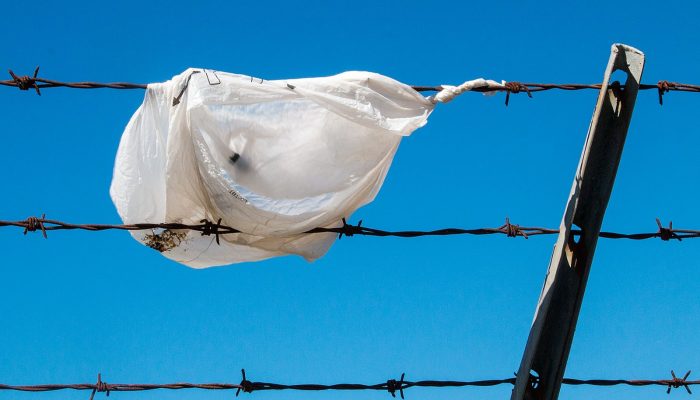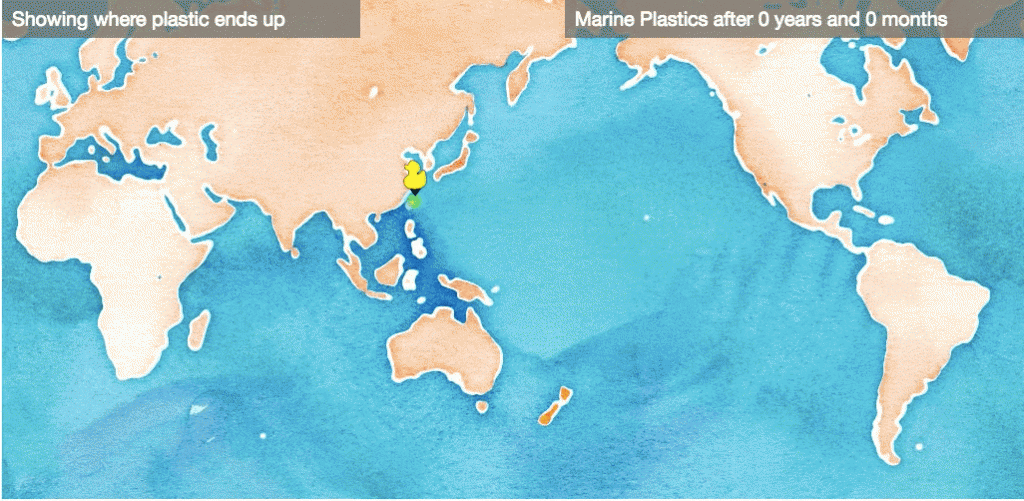
Awareness around the prevalence of plastic pollution, particularly in our oceans, has been growing over the last few years. This is not surprising considering that plastic production has surged from 15 million tonnes in 1964 to 311 million tonnes in 2014 and models have shown that this number will double again within the next 20 years in a business as usual scenario. Furthermore, research conducted by the European Commission estimated that Europeans generate a combined 25 million tonnes of plastic waste annually with less than 30% being collected for recycling.
All this sounds quite overwhelming but the real problem is, while we can estimate the production of plastic with some certainty, it is extremely difficult to know exactly how pervasive plastic pollution is on a global scale and how it is impacting human health and our environment. There are a huge number of researchers from a variety of scientific disciplines currently working on these issues. Some prominent research areas related to plastic pollution include:
- Microplastics – a plastic pollutant that we still understand relatively little about. Microplastics are small plastic particles (<1 mm) that originate from larger plastic waste erosion and through the abrasion of synthetic fibres commonly used in clothing. A 2017 study on microplastics found that 80% of the drinking water samples collected on five different continents tested positive for the presence of plastic fibre. The exact environmental and health implications of microfibres still isn’t clear.
- Location and movement – Understanding the location and transport pathways of plastic pollution can help us estimate how much there is, where it is and how it might be impacting the ecosystem. Unfortunately, the location of most plastic pollution is still unknown. Recent research suggests that there are roughly 300 billion pieces of floating plastic in the polar ocean while other research shows a significant amount of plastic is entering the food web.

A bottle dropped in the water off the coast of China is likely to be carried eastward by the north Pacific gyre and end up a few hundred miles off the coast of the US. Photograph: Graphic. Credit: If you drop plastic in the ocean, where does it end up? The Guardian. Original Source: Plastic Adrift by oceanographer Erik van Sebille. Click to run.
- Lithosphere – Although the location of some plastics is unknown, others are now being found where we would least expect them… as part of the lithosphere! A new type of stone (plastiglomerate) has recently been discovered in Hawaii. This stone, which the research team believes is a result of burning plastic debris in an open environment, was found to be primarily composed of melted plastic, beach sediment, basaltic lava fragments and organic debris.
The methods used to communicate plastic pollution research, and its potential impact on the environment and human health, have been extremely effective in both mobilising citizens to reduce their own plastic use and is showing policymakers that the public wants a large-scale transformation.
As a result, plastic pollution is now being tackled by the EU Plastics Strategy, a political action that was largely driven by research and the subsequent public advocacy.
What is the EU Plastics Strategy?
The EU Plastics Strategy was adopted on 16 January 2018 after research into the extent and impacts of plastic pollution was conducted by a research team commissioned by the European Commission. The strategy aims to change the way plastic products are designed, used and produced within the EU. The strategy also outlines the European Commission’s primary goal of a 55% plastic recycling rate, with all plastic packaging in Europe recyclable or reusable, by 2030.
To achieve this, a €350m budget for research into innovative plastic design, production and collection has been reserved with the additional possibility of a tax on unsustainable plastic production.
Furthermore, the strategy is proposing better recycling programmes across all EU countries, clearer labelling on packaging so consumers fully understand its recyclability, easier access to tap water in public areas to reduce the demand for bottled water, and a ban on microplastics in cosmetics and personal care products.
With these aims, the European Commission hopes that the EU Plastic Strategy will reduce plastic pollution while also help the EU transition into a circular economy and reach their goals on sustainable development, global climate and industrial policy.
There’s still a long way to go
The release of the Plastics Strategy is just the beginning of the EU’s fight against plastic pollution – it’s the blueprint for legislation that will be implemented over the next couple of years. You can view the European Commission’s timeline of actions, directives and policies related to the strategy here.
Although the Plastics Strategy is only the first step towards implementing legislation, it is a strong signal to investors and the private sector that there is a lucrative market in plastic alternatives and recycling technology. This means that there is likely to be more money pumped into finding solutions on top of the €350m reserved for plastic research and innovation by the EU.
What’s the positive take home message?
Despite plastic pollution being a challenging and frightening problem, it is also a fantastic example of how researchers, civil society, policymakers and the private sector play different but complimentary roles in creating large-scale change. With the initial crisis highlighted by researchers, mobilised by civil society, acted upon by policymakers and invested in by the private sector, the threat of plastic pollution can also be seen as the beginning of a success story – we just have to follow it through!
Further information





Essay Writing Service uk
nice article, thanks for it…
Essay Writing Service uk